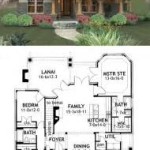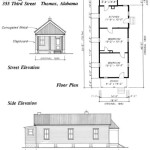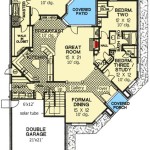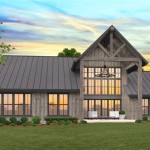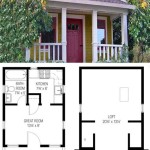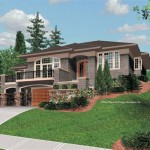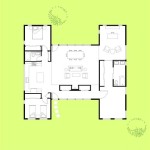Design House Floor Plans and the Quest for a Dream Home: Addressing Common Complaints
The process of designing a house floor plan is a pivotal step towards realizing the dream of homeownership. It involves translating personal needs, lifestyle preferences, and aesthetic visions into a tangible blueprint for a living space. However, this process is rarely without its challenges. From initial conceptualization to final construction, homeowners frequently encounter frustrations and disappointments related to the design and execution of their floor plans. Understanding these common complaints is crucial for both homeowners and design professionals to navigate the process effectively and mitigate potential issues before they escalate.
The creation of a house floor plan is a multifaceted undertaking. It necessitates a careful consideration of spatial relationships, functionality, aesthetics, and budget constraints. Furthermore, adherence to building codes, zoning regulations, and structural requirements adds another layer of complexity. Successfully navigating these complexities requires clear communication, a collaborative approach, and a commitment to addressing potential pitfalls proactively. When these elements are lacking, homeowners often find themselves facing a barrage of complaints that can significantly detract from the satisfaction of building or renovating a home.
This article aims to explore some of the most prevalent complaints surrounding house floor plans, providing insight into their underlying causes and offering strategies for avoiding or resolving them. By understanding these common issues, homeowners can better prepare themselves for the design process, communicate their needs effectively, and ultimately achieve a floor plan that meets their expectations and enhances their quality of life.
Inadequate Space Planning and Flow: A Recipe for Discontent
One of the most frequent sources of dissatisfaction with house floor plans stems from inadequate space planning and a poor understanding of how the spaces will function in daily life. This can manifest in various ways, including cramped rooms, awkward layouts, and inefficient circulation patterns. Often, the initial floor plan may appear adequate on paper, but the reality of living within the space reveals significant shortcomings in terms of usability and comfort.
A common complaint is the lack of sufficient storage space. Many floor plans, especially in smaller homes or apartments, fail to adequately address the storage needs of the occupants. This can lead to clutter, disorganization, and a feeling of being overwhelmed by possessions. Insufficient closet space, a lack of pantry shelving, and the absence of dedicated storage areas for seasonal items are all common contributors to this problem. Effective space planning should prioritize storage solutions that are both functional and aesthetically integrated into the design.
Poor circulation patterns can also significantly impact the livability of a home. A poorly designed floor plan may force occupants to traverse long distances to reach frequently used areas, creating inconvenience and frustration. For example, a bedroom located far from the kitchen or a bathroom accessible only through another room can disrupt the flow of daily activities. The placement of doorways, hallways, and staircases should be carefully considered to ensure smooth and efficient movement throughout the house. Furthermore, the width of hallways and the size of doorways should be adequate to accommodate furniture and mobility needs.
Another aspect of inadequate space planning is the failure to consider the natural flow of light and ventilation. A floor plan that neglects the orientation of the sun and prevailing winds can result in rooms that are perpetually dark or poorly ventilated. This can lead to increased energy consumption for heating and cooling, as well as a less comfortable living environment. Thoughtful placement of windows and doors, along with the incorporation of passive solar design principles, can significantly improve the natural light and ventilation within a home.
To avoid these pitfalls, homeowners should engage in a thorough analysis of their lifestyle and needs before embarking on the design process. This includes considering the number of occupants, their individual activities, and their storage requirements. It is also beneficial to visit existing homes with similar floor plans to gain a better understanding of how the space functions in practice. Working closely with an experienced architect or designer can help ensure that the floor plan is optimized for both functionality and aesthetics.
Budget Overruns and Unexpected Costs: The Nightmare Scenario
Budget overruns are a pervasive concern in home construction and renovation projects, and they often stem from unrealistic or poorly defined floor plans. The initial design may appear affordable on paper, but unforeseen complications, material price increases, and labor costs can quickly escalate the total project expenditure. Homeowners often complain about unexpected costs that arise during the construction phase, leaving them feeling frustrated and financially strained.
One common cause of budget overruns is inadequate planning for site preparation and infrastructure. The floor plan may not fully account for the specific characteristics of the building site, such as soil conditions, drainage issues, or the presence of underground utilities. Addressing these issues during construction can add significant costs to the project. A thorough site assessment and geotechnical investigation are essential to identify potential problems early in the design process.
Another factor that contributes to budget overruns is the selection of expensive materials and finishes. While high-end materials may enhance the aesthetic appeal of a home, they can also significantly increase the overall cost. Homeowners should carefully weigh the cost-benefit implications of each material choice and consider more affordable alternatives that can achieve a similar look and feel. Establishing a realistic budget for materials and sticking to it is crucial for maintaining financial control.
Changes to the floor plan during construction are another common cause of budget escalation. Even seemingly minor modifications can have significant cost implications, as they may require rework, additional materials, and extended labor hours. It is essential to finalize the floor plan and specifications before construction begins and to minimize changes during the building process. Any proposed changes should be carefully evaluated for their potential cost impact before being implemented.
To mitigate the risk of budget overruns, homeowners should work with experienced contractors who have a proven track record of completing projects on time and within budget. Obtaining multiple bids from contractors and carefully reviewing the scope of work is essential for ensuring that the project is competitively priced. A detailed contract that clearly outlines the responsibilities of both the homeowner and the contractor is also crucial for protecting the homeowner's financial interests.
Furthermore, homeowners should set aside a contingency fund of 10-15% of the total project cost to cover unexpected expenses. This fund can provide a financial cushion to address unforeseen issues without derailing the entire project. Regular communication with the contractor and close monitoring of project expenses are also essential for identifying potential budget overruns early on and taking corrective action.
Communication Breakdowns and Misaligned Expectations: The Recipe for Conflict
Effective communication is paramount throughout the entire design and construction process. When communication breaks down between homeowners, architects, designers, and contractors, misunderstandings and misaligned expectations can arise, leading to frustration and conflict. Homeowners frequently complain about a lack of clear communication, unresponsive professionals, and a failure to address their concerns adequately.
One common communication breakdown occurs when homeowners fail to clearly articulate their needs and preferences to the design team. Vague or ambiguous statements can lead to misinterpretations and a floor plan that does not accurately reflect the homeowner's vision. Homeowners should take the time to carefully document their specific requirements, desires, and priorities for the home. Providing visual examples of desired styles and features can also help to ensure that the design team understands the homeowner's aesthetic preferences.
Another communication challenge arises when architects or designers fail to adequately explain the technical aspects of the floor plan to the homeowner. Complex architectural drawings and jargon can be confusing and intimidating for non-professionals. The design team should take the time to explain the floor plan in clear, non-technical language and to answer any questions that the homeowner may have. 3D renderings and virtual reality models can also be helpful tools for visualizing the finished space.
Communication breakdowns can also occur between the design team and the contractor. If the floor plan is not clearly documented or if the specifications are ambiguous, the contractor may misinterpret the design intent, leading to errors and rework. Regular communication between the design team and the contractor is essential to ensure that the construction process is aligned with the design vision. On-site meetings and regular progress updates can help to identify and resolve any potential issues early on.
To foster effective communication, homeowners should establish clear communication channels from the outset of the project. This includes identifying a primary point of contact for each party involved and establishing a regular schedule for meetings and updates. Utilizing project management software or online communication platforms can also help to streamline communication and keep all parties informed. Furthermore, homeowners should actively participate in the design review process and provide timely feedback to ensure that their concerns are addressed promptly.
Ultimately, the success of any house floor plan design project hinges on clear communication, realistic expectations, and a collaborative approach. By addressing these common complaints proactively, homeowners can significantly increase their chances of achieving a dream home that meets their needs, budget, and aesthetic preferences.

How To Design A House From Sketch Reality

How To Design A House From Sketch Reality

Ai Floor Plan Generator Best Interior Design Tool Online

Free Floor Plan Creator Design 2d 3d Layouts Easily

How To Draw Accurate Floor Plans Step By Guide

How To Design A House From Sketch Reality

How To Draw Accurate Floor Plans Step By Guide

Free Floor Plan Creator Design 2d 3d Layouts Easily

How To Read A Floor Plan With Dimensions Houseplans Blog Com

How To Read A Floor Plan With Dimensions Houseplans Blog Com
Related Posts

